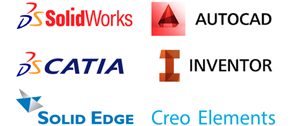Stills from Ridley Scott’s ad for the Apple Mac, which was screened during the Super Bowl on 22 January 1984.
Thirty years ago (on 24 January 1984, to be precise), a quirky little computer company launched a new product and in the process changed lives and maybe the world. The company was called Apple and the product was named after a particular type of Californian apple – the Macintosh.
With astonishing chutzpah, the company announced the product to the world via a single advertisement screened during the Super Bowl on 22 January. The film was directed by Ridley Scott and showed a dimly lit auditorium in which ranks of drably clad zombies are being harangued by a despotic figure shown on a huge screen. Into this auditorium comes a beautiful female athlete who runs towards the screen carrying a large hammer, pursued by goons attired in riot police gear. Just as the despot's rant reaches a climax, the athlete stops, whirls the hammer four times and then launches it at the screen. When it strikes, the screen explodes and the camera pans to the zombies, whose mouths gape in bewilderment. "On January 24th," intones a voice over the closing scene, "Apple Computer will introduce Macintosh. And you'll see why 1984 won't be like Nineteen Eighty-Four."
Most people who saw the ad were probably baffled by it. But for some of us, the symbology was clear. We had seen the chaotic exuberance of the early personal computer movement tamed by the arrival of IBM, then the Darth Vader of IT. In 1981, IBM had launched its personal computer, at which point the corporate world began to take the technology seriously. The idea took hold that personal computers were not playthings for home-brew hackers, but serious business tools for running spreadsheets. And as that happened, a powerful network effect kicked in: the IBM PC – and its Microsoft software – became the de facto standard and so software developers wrote programs that would run only on it and a gigantic, slate-grey, business-driven ecosystem evolved around the PC.
The Macintosh was a truly radical challenge to this orthodoxy. Where PCs were rectangular metal boxes with green or grey, text-only displays, the Macintosh was slightly curvy and beige and had an integral bitmapped screen on which one could draw pictures and – even more amazingly – edit them. It implied that this might be a device not so much for work as for play.
It was the screen that hooked most of us early adopters. I vividly remember the moment I first saw it. It was at a university workshop organised by Apple. Here's what my notes on the event say. "After an initial spiel by company representatives, we were let loose on the machines. They had been set up displaying a drawing of a fish. It was, in fact, a MacPaint file. I stared at the image, marvelling at the way the scales and fins seemed as clear as if they had been etched on the screen. After a time, I picked up courage, clicked on the 'lassoo' tool and selected a fin with it. The lassoo began to shimmer. I held down the mouse button and moved the rodent gently. The fin began to move across the screen! I selected 'Cut' from a pull-down menu and the fin disappeared. Finally, I closed the file, declining the invitation to save my changes, and the fish disappeared. Then I reloaded it from disk and there was the fish again, as good as new."
It sounds so trivial now, but then it felt like what James Joyce might have called an epiphany. I remember thinking: this is the way it has to be! I felt what Douglas Adams later described as "that kind of roaring, tingling, floating sensation" that characterised his first encounter with MacPaint. "In the blink of an eye," I wrote later, "all the teletypes and dumb terminals and character-based displays that had been essential parts of my computing experience were consigned to the dustbin of history. I had suddenly seen the point – and the potential – of computer graphics."
Since then, although I've used all kinds of computers, I've always had a Mac. As has Stephen Fry, who also celebrated the machine's 30th birthday last week. "What cannot be denied," he wrote, "is that the first Macintosh changed my life completely. It made me want to write; I couldn't wait to get to it every morning. If you compare computers to offices, the Mac was the equivalent of the most beautifully designed colourful space, with jazzy carpets on shiny oak floors, a pool table, wooden beams, a cappuccino machine, posters and great music playing. The rest of the world trudged into Microsoft's operating system: a grey, soulless partitioned office, with nylon carpets, flickering fluorescent lamps and a faintly damp smell."
Amen.
via apple - Google News http://ift.tt/1kuLJ7P













0 comments:
Post a Comment